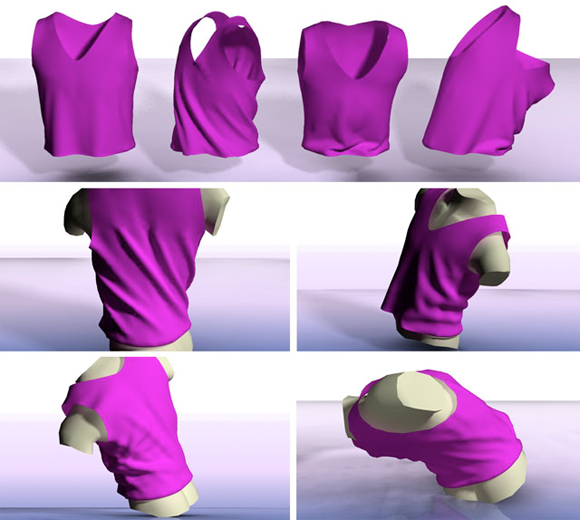- publication
- EUROGRAPHICS 2007
- authors
- Ofir Weber, Olga Sorkine-Hornung, Yaron Lipman, Craig Gotsman

Deformation using characteristic shapes. Left to right: Rest shape; one example with slight muscle bulge; two deformations of the rest shape based on the example. Note the significant and natural bulge of the muscle.
abstract
We describe a system for the animation of an articulated object controlled by a skeleton that preserves the fine geometric details of the object skin and conforms to the characteristic shapes of the object specified through a set of examples. The system provides the animator with an intuitive user interface and produces compelling results even when presented with a very small set of examples. In addition it is able to generalize well by extrapolating far beyond the examples.
downloads
- Paper (EUROGRAPHICS 2007, official version available at http://diglib.eg.org/)
- BibTex entry
- Video
accompanying video (with narration)
examples
Context-aware deformation of a t-shirt. Top: rest shape and 3 examples. Bottom rows: deformations of the rest shape into arbitrary poses.

The effect of using different amount of anchors when deforming the original mesh using one example. Using just 2% of the triangles as anchors produces a muscle bulging effect almost indistinguishable from that produced with 100% anchors.

Extrapolation quality. Left to right: rest shape (flat mesh with waves); one example with a bend; deformation of the rest shape based on the example. Note the significant extrapolation of the bend. Only 30 anchors out of 24,000 triangles were used.

acknowledgments
We thank Tamir Shemesh for valuable help with the art-work and Debbie Miller for her help with the video narration. The models of the arm, leg and beast body are courtesy of Autodesk®. This research has been partially funded by European FP6 IST NoE grant 506766 (AIM@SHAPE) and the Alexander von Humboldt foundation.